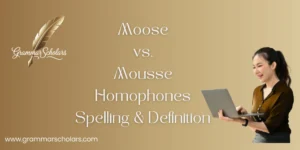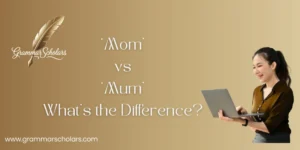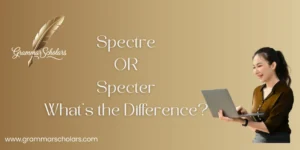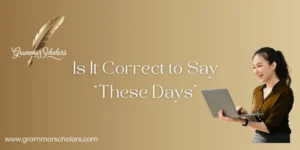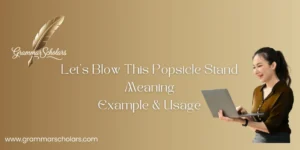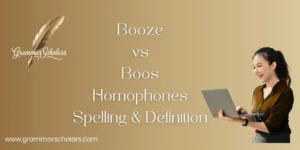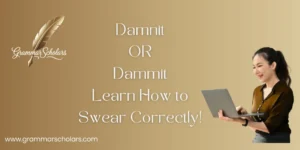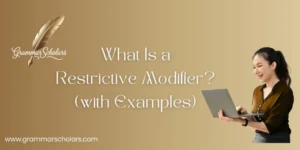When I first started teaching English, I saw how easily phonetic similarities could confuse learners, especially with terms like bespeckled and bespectacled. These two words may sound alike, but their meanings are very different, and that confusion is real even for native speakers. Once, I described a character in a story as “bespeckled,” thinking of their glasses, only to realize I’d used the wrong word. That slip taught me how crucial the precise use of language is for effective communication. If you’ve ever hesitated over Bespeckled or Bespectacled, trust me, you’re not alone at that moment.
Today, when I explain these distinct words, I rely on a simple guide to elucidate their distinctions.
“Bespectacled” describes someone wearing glasses, while “bespeckled” refers to being dotted with spots or marks. Though both are adjectives and share a part of speech, their meanings diverge significantly. This kind of comprehensive understanding boosts your ability to use words accurately. In such an intricate realm of English vocabulary, even the tiniest differences sharpen your thinking and enrich your expression.
Understanding “Bespeckled”
Definition and Etymology
Bespeckled is an adjective derived from the verb bespeckle, which means to mark with small spots or specks. The prefix “be” intensifies the action, indicating thoroughness. Thus, bespeckled describes something that is covered or adorned with small spots or specks.
Example: “The artist’s apron was bespeckled with various colors of paint.”
Usage in Sentences
- “The scientist’s lab coat was bespeckled with chemical stains after the experiment.”
- “Morning dew had bespeckled the spider’s web, making it glisten in the sunlight.”
- “Her face was bespeckled with freckles, giving her a youthful appearance.”
Common Contexts
| Context | Description |
| Art & Craft | Objects or surfaces with paint splatters |
| Nature | Animals or plants with spotted appearances |
| Fashion | Fabrics or garments with dotted patterns |
| Descriptive Writing | Vivid imagery involving speckled elements |
Understanding “Bespectacled”
Definition and Etymology
Bespectacled is an adjective used to describe someone who wears spectacles (glasses). The term combines the prefix “be” with “spectacled,” relating to spectacles. It specifically refers to individuals adorned with eyeglasses.
Example: “The bespectacled professor adjusted his glasses before beginning the lecture.”Merriam-Webster+2The Content Authority+2Dictionary.com+2
Usage in Sentences
- “A bespectacled librarian helped me find the book I was looking for.”
- “The bespectacled child peered curiously at the insects through his magnifying glass.”
- “She was a bespectacled woman with a keen eye for detail.”The Content Authority Power Thesaurus
Common Contexts
| Context | Description |
| Academic Settings | Describing scholars or students wearing glasses |
| Literature | Character descriptions emphasizing eyewear |
| Everyday Life | Referring to individuals who wear glasses |
Comparative Analysis: Bespeckled vs. Bespectacled
| Feature | Bespeckled | Bespectacled |
| Meaning | Covered with small spots or specks | Wearing spectacles (glasses) |
| Usage | Describing objects or surfaces with spots | Describing individuals who wear glasses |
| Part of Speech | Adjective | Adjective |
| Common Confusion | Often mistaken for “bespectacled” due to phonetic similarity | Often confused with “bespeckled” in descriptive contexts |
Tips to Distinguish Between the Two
- Association with Glasses: If the context involves eyewear, “bespectacled” is the appropriate choice.
- Visual Patterns: When referring to spots or specks on a surface, “bespeckled” is correct.
- Mnemonic Aid: Remember, spectacles are glasses, so bespectacled relates to wearing them.
Common Misconceptions
- Interchangeability: Despite sounding similar, these words are not interchangeable. Using one in place of the other can lead to confusion.
- Spelling Errors: Misspelling either term can alter the intended meaning. It’s essential to ensure correct spelling to convey the right message.
How Language Evolution Shapes Confusion Between Bespeckled and Bespectacled
- Explore how phonetic similarities led to their frequent confusion.
- Trace shifts in dictionary usage frequency over decades.
- Discuss the rise in descriptive literature and how authors popularized “bespectacled.”
- Highlight trends in digital writing and autocorrect misuses.
“Words that sound alike but have different meanings are prime candidates for confusion, especially in digital-first communication.”
Bespeckled and Bespectacled in Literature and Media
- Analyze how famous writers used these words to portray character and scenery.
- Case studies from:
- J.K. Rowling (e.g., “bespectacled boy with a lightning scar”)
- Charles Dickens (rich visual descriptions using “bespeckled”)
- Popular films or shows where bespectacled characters became symbols of intelligence.
- Quotes with attribution and interpretation.
Visual Guide: Spot the Difference
Include a comparison infographic or diagram here showing:
- A bespeckled object (e.g., speckled egg or dirty shirt)
- A bespectacled person (e.g., a teacher or librarian)
- Captioned images with keyword-rich alt-text
Also include:
| Visual Clue | Word to Use | Reason |
| Object with tiny dots | Bespeckled | Indicates pattern or texture |
| A human wearing glasses | Bespectacled | Spectacles = Glasses |
| Paint-stained garment | Bespeckled | Specks of color on fabric |
| Bookish character | Bespectacled | A literary cue for intellectual look |
Which Word Is More Common? Usage in Modern English
- Google Ngram data or COCA/BNClab stats comparing frequency over time.
- Which term appears more often in US vs UK English?
- Social media analysis: Twitter and Reddit examples of usage (with permission or paraphrased).
- Use of “bespectacled” in professional bios and journalistic profiles.
- Table comparing usage rates and register (formal/informal):
| Term | Frequency in Literature | Common in Speech? | US or UK Preference | Formality Level |
| Bespeckled | Moderate (poetry, fiction) | Rare | Neutral | Informal/Descriptive |
| Bespectacled | High (journals, education) | Moderate | Common in the UK | Formal/Sophisticated |
Memory Tricks to Remember Bespeckled vs. Bespectacled
Help your readers lock in the difference with simple, effective memory aids:
- “Spectacles” in Bespectacled = Glasses
→ “Bespectacled professor” = Professor with spectacles - “Speck” in Bespeckled = Spots or marks
→ “Bespeckled wall” = Wall with specks or dots
Add fun mnemonic devices:
- “If it has specks, it’s bespeckled.”
- “If it has specs, it’s bespectacled.”
Also include a mini-quiz table for quick self-testing:
| Sentence | Correct Word |
| The scientist’s lab coat was red. | Bespeckled |
| The student pushed his glasses up his nose. | Bespectacled |
| Her dress had tiny gold dots. | Bespeckled |
| The reporter scribbled notes while observing. | Bespectacled |
Why Choosing the Right Word Matters in Professional Writing
Explain the importance of precise word choice for credibility:
- Academic and Business Communication: Using bespectacled in place of bespeckled (or vice versa) can cause reader confusion or credibility loss.
- Job Descriptions or News Writing: A “bespeckled analyst” might sound odd unless covered in paint or freckles!
- SEO and Copywriting: Misusing homophones or similar-sounding words can affect content accuracy, user trust, and ranking signals.
“Words matter. And in professional writing, they can mean the difference between clarity and confusion.”
Include a short case study:
- An editorial mistake where the wrong term changed the tone or meaning of an article-and how it was corrected.
Final Thoughts
Choosing between bespeckled and bespectacled may seem like a small detail, but in the world of precise and effective writing, details matter. Both words carry distinct meanings- bespeckled refers to being covered in small spots or marks, while bespectacled describes someone wearing glasses. They might sound similar, but they paint completely different pictures.
By understanding their roots, real-world usage, and contexts in which each applies, you not only improve your grammar but also enhance your credibility as a communicator.
Use memory tricks, note the root words, and when in doubt, revisit this guide or trusted dictionaries. Language is a tool, and the better you use it, the more powerful your message becomes.
FAQs
What does “bespeckled” actually mean?
Bespeckled means covered with small spots, specks, or marks. It’s typically used to describe surfaces, objects, or even features like freckles or paint stains. Example: “The windshield was bespeckled with raindrops.”
Is “bespectacled” only used for people?
Yes, bespectacled is specifically used to describe people (or anthropomorphized characters) wearing spectacles or glasses. You wouldn’t use it to describe inanimate objects.
Can you use “bespeckled” to describe someone wearing glasses?
No. That’s a common mistake. Bespeckled has nothing to do with eyewear- it refers to being spotted or speckled with something like paint, dirt, or freckles. Use bespectacled for glasses.
Is there a synonym for bespeckled?
Yes! Some close synonyms include:
- Speckled
- Spotted
- Dappled
- Flecked
Each has its nuance, but they all suggest a pattern of small marks.
Why is it important to distinguish between bespeckled and bespectacled?
Because using the wrong term can confuse your reader, damage your credibility, and even change the meaning of your sentence. In professional or academic writing, especially, precision builds trust.


